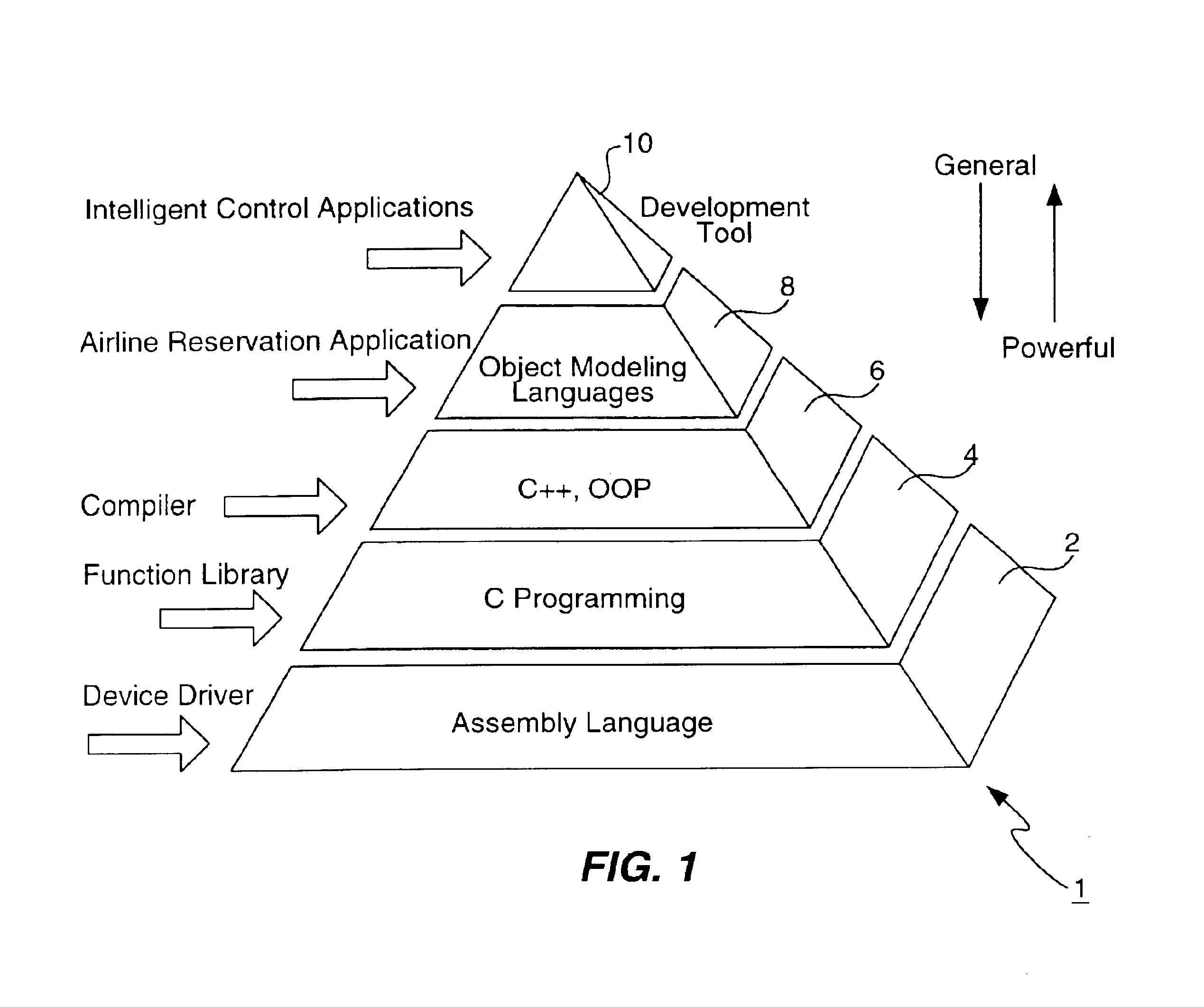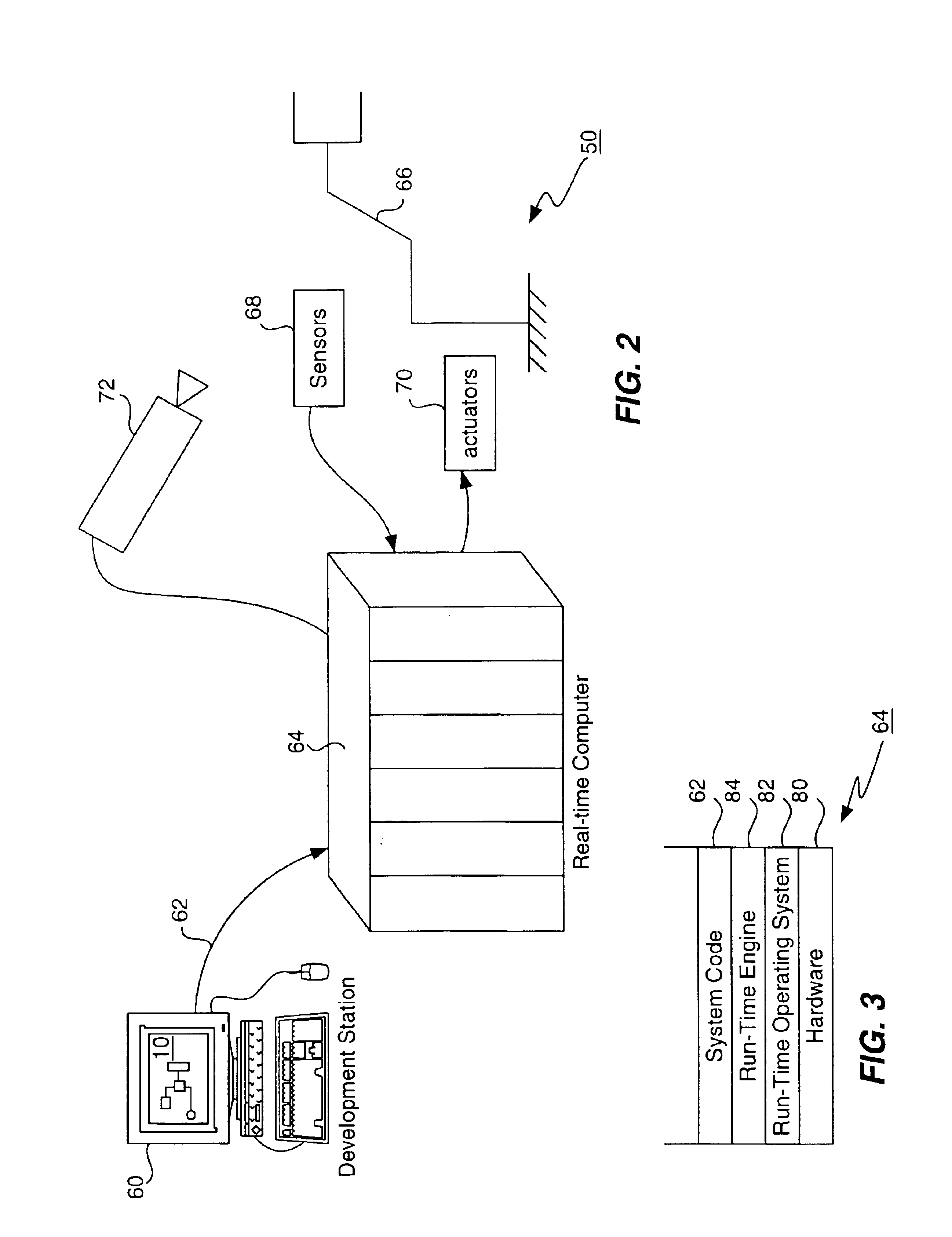Building software for real-
time control systems is a huge challenge.
Prior art development tools for such complex systems have simply not been able to keep pace with the demands of these complex systems.
Development tools built for other real-time applications—such as
telecommunications or databases—are not well suited to the challenges of complex control systems.
In particular, they are not well-suited for complex electromechanical systems.
But often they do not truly accelerate development.
In particular, prior art object-oriented modeling tools are useful for some systems as will be described below, but are not well suited for the needs of complex, real-time control systems.
However, in most systems they only apply to a small percentage of the total problem.
They are not good
programming systems, and thus cannot
handle truly complex systems that require significant custom coding.
In particular,
mathematical simulation tools are useful for certain applications as will be described below, but are also not especially well-suited for the needs of complex, real-time control systems.
However, the top-down
design process has a serious flaw: it leads to unique solutions to every problem.
None of the resulting subsystems can be reused easily.
However, like a concept car, the result will contain many strange parts that all have to be painstakingly handcrafted.
In particular, various prior art object modeling tools work well for general problem areas, but are not optimal for complex, real-time control systems.
They are not well-suited for, and are unable to
handle, sampled-
data processing mainly because the problems they address do not require it.
In general, these prior art object modeling tools do not provide sampled-
data processing that is often critical in complex real-time systems.
Specifically, these tools have no concept of matrices and are unable to implement detailed mathematical calculations nor evolve over time.
These deficiencies mean that these tools may not be well-suited for certain real-time systems that require such complex mathematical simulations.
However, without the overall picture and goal in mind, it often does not result in a clean division of functionality.
The bottom-up
design process provides no overall view to communicate the goals and progress of a project between team members.
Only true reuse generates the leverage that results in large dividends.
Small, functional components are easy to reuse, but do not provide large benefits.
But complex components have complex interfaces and specific functions.
The more complex the component, the harder it is to reuse.
As such, they provide advantages for certain narrow problem areas, but are not well-suited for modeling complex real-time systems.
These
simulation tools, however, are not object-oriented programming tools and are not well-suited for modeling systems or for building complex real-time systems.
Specifically, these tools are useful for building a data flow model of the world where intense number crunching is necessary, but they do not provide objects, methods upon objects, or the other beneficial features of object-oriented programming tools.
Unfortunately, often
complex problems require both a top-down and a bottom-up approach.
Of course, real-life control systems are incredibly more complex.
This technique is confusing and hard to understand and maintain.
These lines can become very complex and difficult to manage, let alone simply trying to figure out which mode the
system is in.
Furthermore, many complex systems often radically change
modes of operation during execution.
The designs of these systems may fail to consider the wide-
ranging effects of these mode changes and “run out of steam” due to the complexity of the branches and switch blocks required.
The fast rate required for a particular sensor may be incompatible with the slower sampling rate of a different element.
Simply slowing the whole system down to accommodate one
slow rate element is not efficient.
Conversely, speeding up the whole system to run at a fast rate is not feasible if one particular sensor or data sampling element cannot cycle that quickly.
Further, it can be unwieldy to break the system into different pieces for different processors, only to try to
cobble the system back together to make it function correctly.
 Login to View More
Login to View More  Login to View More
Login to View More 


